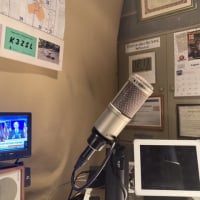SmartSDR v4.1.3 | SmartSDR v4.1.3 Release Notes
SmartSDR v3.10.15 | SmartSDR v3.10.15 Release Notes
The latest 4O3A Genius Product Software and Firmware
Need technical support from FlexRadio? It's as simple as Creating a HelpDesk ticket.
Networked remote power device suggestions?
Does anybody have a suggestion on how to remotely turn on/off the FlexRadio 6600M remotely, over the network? I've sent an email to Digital Loggers about their interfaces to see if they have one that will simply open/close a circuit (for the remote switch on the back of the Flex). It seems like many buy one of their remote AC switches, then buy an additional module that is controlled by the remote AC power. I'd prefer to have an integrated device, as I don't currently have a need to remotely control AC power on any other devices.
Is there something useful for controlling DC as well? That way I could have an emergency shut off (if remote power wasn't working) for the Flex as well as other devices. Digital Loggers has the DIN IV which looks to solve both problems (potentially) - but the relays built in are only rated for 12A. Has anybody used this and added an external device to handle switching something like a FlexRadio (25A) or other higher-current devices?
Thank you!
Answers
-
I found a very effective way is to use a remote AC power unit over the Internet. When you need to switch 12 volts, just apply 120 VAC to a small cheapo 12VDC wall wart. Amazon has literally hundred of those for very good prices. To control a relay, use a 12 VDC relay which is attached to one of the wall warts. I use that to remote control the ON/OFF of my 6500's.
Jim, K6QE
0 -
David,
You could use a West Mountain Radio RIGrunner 4005i. It has a built-in web interface that allows you to control multiple devices remotely. It's a little pricey, but I know a couple of OM that have had good experiences with them.
http://www.westmountainradio.com/product_info.php?products_id=rr_4005i
73,
Dave
K1DLM0 -
I use a Denkovi USB relay board to close the contact needed to power on my Flex6300. They even supply the software to control it that runs on my local Windows PC that I use TeamView to connect to.
I use the 4 relay USB board to turn my DC supply on/off, turn on/off my 6300 and if I ever get one a KPA500 linear.
I think they are about $17.
Here is a link: http://denkovi.com/usb-relay-board-four-channels-for-home-automation-v2
I guess the only negative is a local PC required. Good luck, 73 W4SG Dennis
0 -
-
I ended up using a Raspberry Pi with a relay hat. One reason I did this was so I could build a webpage to control my stuff from just about anywhere. My little web page looks like this:

1 -
0
-
You sure can. I'll check that out. Wish I had a rotor to rotate... Seems like it would be fun!0
-
Have a look at Craig's post on this thread
https://community.flexradio.com/flexradio/topics/is-the-6600-corruptible-from-power-loss
Tim VE6SH
0 -
I bought this $3.62 110/120 VAC relay from Amazon.
https://www.amazon.com/SODIAL-HH52P-120VAC-Electromagnetic-DYF08A/dp/B00J2N3I14/ref=sr_1_11?ie=UTF8&...
It has real terminals on it with a dust cover and all you need to do is put a cord on it and plug it into one of the the Digital Logger 8 sockets. Turn on the plug remotely and have the line voltage trip the relay that turns the Flex on and off remotely. Works like a charm.
0 -
I got both the Digital Logger Pro Switch and the DIN Relay IV box to turn on AC power to certain devices and to remotely turn the Flex 6500 On and OFF. After a couple of weeks of using both DL devices, it became apparent that there was a simpler way to accomplish my switching requirements using ONLY the DL Pro Switch. Instead of having to log into two devices with IDs and passwords, I now only need to log into one device. I can turn on/off a mixture of 8 AC, DC, or contact/no contact devices with the DL Pro Switch. One other consideration to dump the DIN Relay was the birdies that showed up on the panadapter when the DIN Relay device was energized.
1. AC devices simply plug into an AC outlet of the DL Pro Switch. The outlet is turned ON or OFF by the DL control software. In addition to turning ON and OFF 120v AC devices, an outlet can also be used to energize 120v relays to enable or disable 240v AC power to amplifiers.
2. To turn DC powered devices ON or OFF, an AC powered "brick" with the desired DC voltage is plugged into an AC outlet of the DL Pro Switch. As that AC outlet is turned ON or OFF, the DC output voltage of the "brick" will be turned ON or OFF to the connected DC device.
3. For devices that need to be remotely turned ON or OFF by completing a circuit (like the 6000 series Flex radios), a simple SPST 12v DC relay (like an automotive relay) is energized by a "brick" as in number 2 above). The switch SPST 12v relay is normally in the no contact position, and when the DL Pro Switch outlet is energized, the SPST 12v relay closes the contact and the Flex radio will be turned ON. Turning the outlet OFF opens the contact and the Flex radio turns OFF.
The individual "bricks" greatly simplify turning ON or OFF devices that require a mixture of DC and AC voltages.
Be advised, however, that the Digital Logger devices come set up with a 192.168.0.**** IP address. You will need to change that IP to a 192.168.1.**** address for your network to see it. I had a network-savy friend of mine change this for me. From what I read on the Flex Community, most of the community is network-savy and will already know how to do this.
Charles K5UA
1 -
I would just make one correction in that the Digital Logger IP address needs to be changed to the IP address scheme used on your network which might not be 192.168.1.****.
0 -
Absolutely correct John, I just didn't know quite how to say it. I know just enough networking to get me in trouble. hihi Thanks for the clarification.
0 -
Thank you for the tips. I purchased the new pro switch and their $9 ac controlled relay. It should work exactly as you described. I appreciate all the detail! No worries on the network front, I have a interesting home setup and keep the flex and associated devices in their own vlan, and will be sure to properly configure the device to match.0
-
what about a belkin wemo smart switch plug
 0
0 -
These devices use a centralized server. If the server goes out, you lose contact with the switch. I had that experience with my office light and Alexa. Wemo was out for several days, until they fixed it and sent out an email of apology.
Also, beware of some of the early Digital Loggers, mine was sending noise carriers over most of the HF bands. The carriers were approximately 75 kHz apart. The more outlets I turned on, the stronger the carrier signals were on my panadapter. A call into Digital Loggers found them to be very concerned and within a few days they made a change in the electronics and sent me a new, 8 port, 110 VAC, internet based switch, even though the one I had was past warranty.
0 -
I am using this WEMO switch over last year with my Coffee Machine, it can push 1800W and it never let me down. My Coffee Espresso machine takes about 1100W.
Easy to use, I can setup a schedule when I want my machine to turn ON or OFF or can do it manually. I can operate it over WIFI around my home or over internet.
Love it.
KN7K1 -
WEMO Switch and Flex Remote On feature1
-
here i use Digital Loggers Ethernet Power Controller III for my remote station
for on/off of the 6600 i add a "extra" signal relay jumped over the outlet 8 relay
DLI have great advantage for remote station
1-) very reliable ,server room proved
2-) user configurable power loss recovery state (all on , all off , last position ) ,this save me couple of time ;-)
3-) in case internet connection lost ,it may cycle outlet based on use script , like reboot the router
4-) handle 20A like a breeze , each of my linear take 17A @120V ,and abuse it on EME and meteor scatter , each of the 2 power plug supply 4 outlet (8 total)
1 -
I had 3 WEMO to control my station.. BUT they were never 100% reliable enough.as they relied to much on their central server
I replaced them with 2 8 Port Digital Logger Web Switches.. They are much more reliable as they are able to reboot themselves and all my routers and modems when the Internet fails.
0 -
 1
1 -
The most affordable solution is the WeMo. $29 on sale. It's also very important to have remote access to your router. A Raspberry Pi VPN is a good idea as well this was very important when I did the version 2.30 upgrade as you can not do it via Smartlink . Wemo's are very stable if you reserve an IP address using the WeMo's mac address. As a snowbird I have used the WeMo's for 4 years now.1
-
Jim how is that connected to the internet.0
-
Almost all of the WiFi-enabled remote power switches come with the ability to control them from an iOS or Android app. I have some from JinVOO, CESmart, Smart Life, and Insteon. They all allow individual 120V outlets to be switched from anywhere that you have Internet access. Of course you will need to have functioning Internet access at the outlet site - that may require some scripts to check that your Internet router and modem are functioning, and power-cycle them if there is an issue (that’s going beyond what many do - they just depend on someone local to the radio to do the reset). Look on eBay or Amazon for switched outlets, and you should come across lots. You will also find them referenced on this Community in a number of places. Good luck, and ask for help when you need it.0
-
Thanks but I have the remote plug and relay that work on my local lan. I don’t know how to do this over the internet.0
-
Without adding a web server, you are out of luck controlling a local device from outside your local network. Spend the $20 to get a few Internet-connected outlets unless you are proficient at either programming or setting up web services (and all the ISP grief that entails :-) Maybe look at the posts from Michael Walker about every “Node Red”?0
-
I have one that works with my local lan. But said it couldn't connect because I was out of the lan.
0 -
What model of remote power switch do you have? It is always possible it can be made to work, depending on who manufactured it, and what protocols it supports, and if there are any iOS / Android apps that support it. If it is truly only local, it _may_ be possible to get to it using either a VLAN or port forwarding on your router. Port forwarding would need to be done with caution, as many devices designed for private LAN use have little or no security built in.0
-
This topic originally posted two years ago, but thought I would reply with a recent solution to performing a hard reboot to an RF amplifier. In the photos below, you'll see a device I made in about an hour. It's inserted between an amplifier and its AC power source and controlled by a DLI Ethernet power controller.
A pair of Crydom solid-state relays (SSR) are used as a DPST switch. The relays are installed in a common 4x4x2-inch NEMA enclosure. The input control comes from a standard wall cube with any output voltage between 3V and 32V DC. Mine uses a 9V DC wall cube that was found in a junk box. A chassis-mounted 2.1mm coaxial DC jack is used from the wall cube.
The wall cube plugs into an open outlet in the DLI controller. Rebooting the amp is accomplished by recycling power through the DLI's web-based GUI.
Because the wall cube has a capacitive output filter, voltage stays at the output for a few seconds after AC disconnected. As a fix, I placed a 1/4-watt 1K resistor across the SSR inputs. Output voltage from the wall cube drops to zero in about one second.
The SSRs are rated at 250 VAC and 40 amps of current. In one photo, you'll see that the green ground wire retains full continuity. I used a "ring cut" on the portable power cable to avoid a break in the ground wire. This can be done with a non-metallic enclosure but a metallic enclosure requires connection of the ground lead to the enclosure. An old fashion 240 VAC neon panel lamp serves as a simple pilot light to show when the device is hot and active.
Two SSRs were used in this case as the amplifier is on a North American 240 VAC circuit. 120 VAC North American circuits may use one SSR. Arguably, even one SSR could be used for a 240V circuit, but safety demands that a switch actually disconnect both line leads.
AC cable enters and exists the NEMA enclosure with a pair of Heyco compression connectors, available from Mouser. Several sizes are available and must be ordered based on the outside dimension of the portable power cable used. In the alternative, Lowes and Home Depot sell similar entry connectors, although not quite as elegant as the Heyco type.
Paul, W9AC

 0
0
Leave a Comment
Categories
- All Categories
- 378 Community Topics
- 2.1K New Ideas
- 630 The Flea Market
- 8.2K Software
- 118 SmartSDR+
- 6.4K SmartSDR for Windows
- 183 SmartSDR for Maestro and M models
- 430 SmartSDR for Mac
- 271 SmartSDR for iOS
- 258 SmartSDR CAT
- 193 DAX
- 382 SmartSDR API
- 9.3K Radios and Accessories
- 38 Aurora
- 257 FLEX-8000 Signature Series
- 7.2K FLEX-6000 Signature Series
- 947 Maestro
- 56 FlexControl
- 865 FLEX Series (Legacy) Radios
- 924 Genius Products
- 463 Power Genius XL Amplifier
- 336 Tuner Genius XL
- 125 Antenna Genius
- 297 Shack Infrastructure
- 209 Networking
- 460 Remote Operation (SmartLink)
- 144 Contesting
- 787 Peripherals & Station Integration
- 139 Amateur Radio Interests
- 1K Third-Party Software







